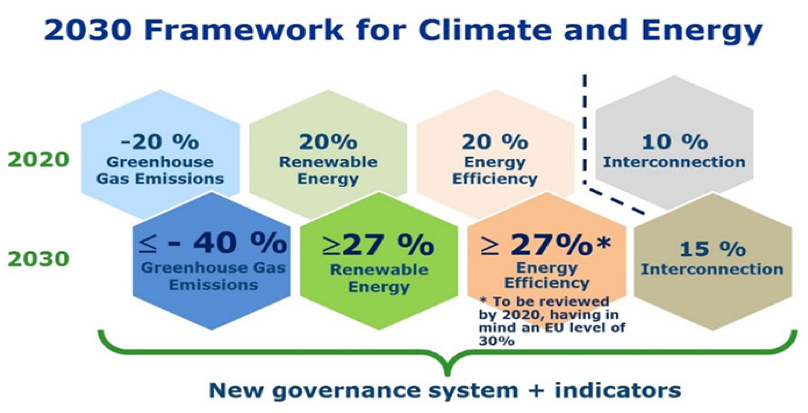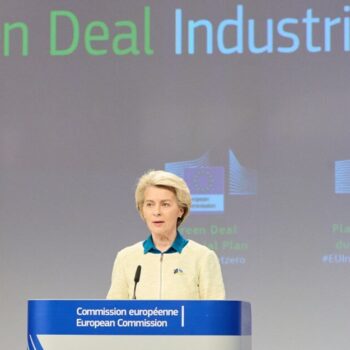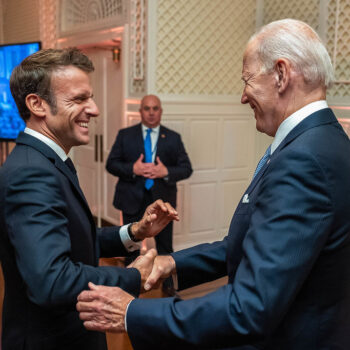Amidst the political sparring over the Paris Agreement since the election of Donald Trump, many in Europe have been quietly getting down to the business of delivering climate action.
There’s a long way to go but Europe has taken some important steps towards fulfilling the long-term goals of the Paris Agreement which are worth celebrating.
Being an early mover has its challenges, but Europe is reaping rewards for its competitiveness, the safety of its citizens and in its reputation as a credible global player. Europe is under pressure to step up and fill the leadership void left by the US and they will have to do a lot more, not least by enhancing Europe’s nationally determined contribution. But as European foreign ministers meet today in Brussels to discuss the future of European climate diplomacy, lets give them a moment of glory for all they’ve done. Enjoy it whilst it lasts!
HOW DOES THE EU ENGAGE ON CLIMATE DIPLOMACY?
- Team EU approach: Europe has taken a ‘team EU’ approach within the international climate regime (e.g. UNFCCC, ICAO, IMO), aligning Member States’ and the European Commission’s positions to maximise effectiveness. This approach also supports setting up smaller “friends of” groups for member states to coordinate on specific topics in and outside the UNFCCC.
- Green diplomacy network: The Green diplomacy network serves as an informal coordination mechanism for European officials working on climate-related issues. They are the primary delivery agents for the EU’s climate diplomacy strategy.
- EU Global Strategy: The EU Global Strategy presents a shared vision for European foreign and security policy. Climate change is heavily integrated into its 5 priority areas – internal security, neighbourhood security, integrated approaches to conflict and crisis, regional cooperation and global governance.
- Policy Coherence for Sustainable Development: The EU’s policy coherence efforts seek to integrate sustainable development objectives in all internal and external policies. Including by identifying synergies between Agenda 2030, the Sendai Framework, climate and trade.
- European Parliament: The EP also communicates European positions on climate diplomacy as well as holding approval powers over the common EU budget for climate diplomacy. They have been at the forefront of ambition, calling for a net-zero mid-century target.
- G7 and G20: The EU is officially represented at the G7 and G20 alongside member states France, Germany, Italy and the UK. Typically, the EU and its member states share joint positions, in 2017 they played a crucial role in responding to the position of the US administration.
- Climate finance: The EU is the single biggest climate finance (and ODA) contributor globally, with total contributions amounting to €20.2 billion in 2016.
- EU external investment: The EU external investment plan (EIP) is the main mechanisms for leveraging EU external investment in Africa and the EU neighbourhood. At the One Planet Summit, it was announced that alongside broader sustainable investment, the EIP would also be used to specifically fund investments into sustainable cities, sustainable energy and connectivity, and sustainable agriculture.
- Ministerial on Climate Action: The EU, Canada and China co-convene regular ministerial dialogues on climate action. The next meeting will be hosted in June 2018 in Brussels.
- Covenant of Mayors: The EU hosts the global covenant of mayors to support local and city level climate action internationally.
- Clean Energy Ministerial: The EU plays host to the CEM in 2018, bringing together 24 of the world’s largest emitters to harmonize clean energy policies and accelerate the transition.
- Member-state climate diplomacy: In addition to EU wide climate diplomacy efforts, member-states also support a range of capacity building, mitigation, adaptation, technology and sustainable finance initiatives as well as political and diplomatic engagement.
WHAT IS THE EU DOING ON CLIMATE DOMESTICALLY?
- 2020 and 2030 packages: The EU’s 2020 and 2030 packages set EU-wide targets for GHG emissions reductions, renewable energy and energy efficiency. The EU is currently on track to overachieve its 2020 targets and is in the process of finalising the 2030 package – negotiations are expected to continue throughout 2018
- 2050 roadmap (2011): The 2011 EU 2050 roadmap models an 80% GHG emissions reduction pathway by 2050. However, the EU is currently developing a more ambitious 2050 roadmap to be submitted no later than 2020. The delivery timeline and level of ambition of a revised 2050 roadmap are yet to be decided.
- Adaptation: The EU adopted its Adaptation strategy in 2013. Additionally, 21 of the 28 member states have national adaptation strategies in place. The EU’s adaptation strategy is currently under review with evaluation results expected by the end of 2018.
- EU budget: Europe currently earmarks 20% of its budget for climate action. Looking forward, the climate compatibility of the next budget 2021-27 will be definitive in determining Europe’s ambition and domestic delivery out to 2030.
- EU Energy Union framework: The Energy Union Framework lays the foundation for a fully integrated European Energy system. Within the wider Energy Union framework, the EU is currently finalising the Clean Energy Package, the legislation supporting delivery of the 2030 energy targets. Issue areas still being decided under Clean Energy package are the ambition level of 2030 renewable energy and energy efficiency targets, the continuation of coal plant subsides and the ambition level for mid-century strategies.
- EU Emissions Trading System (ETS) and the EU Effort Sharing Regulation (ESR): The ETS and ESR are the main delivery mechanisms for the EU emissions reduction targets. The EU ETS is the world’s largest carbon market and covers about 45% of the EU’s emissions, while the ESR covers non-ETS sectors, including ground transport, agriculture, waste and buildings.
- Fluorinated greenhouse gases: The EU has set a strong target to phase out two-thirds of F-gas emissions by 2030. Alongside domestic regulation, the EU also ratified the Kigali amendment in 2017.
- Future of Europe debate: EU leaders will agree a plan for the ‘future of Europe’ in May 2019. Climate has not been a prominent priority in the debate so far, but is recognised at a more technical level in all EU activities. Leaders’ engagement is required to elevate climate to a level that ensures climate ambition anchors “future of Europe” plans.
- Investment Plan for Europe: The Investment Plan for Europe aims to mobilise public and private investment until 2020. One of its main elements is the European Fund for Strategic Investments (EFSI), which channels investments into infrastructure, energy, R&D, education projects. Following an amendment in 2016, at least 40% of EFSI financing is now earmarked to support climate-relevant infrastructure and innovation projects
- Land use: Pre-2020 land-use emissions fall under the EU ESR, but as of post-2020 will fall under a separate regulation. The regulation aims to reduce overall EU greenhouse gas emissions over the 2021-30 period through better protection and management of land and forests. However, it has been criticized by environmental groups as unambitious.
- Platform for coal regions in transition: The recently launched platform will support projects, long-term strategies and collaboration coal and later other carbon-intensive, regions.
- Sustainable finance reform: In an effort to meet the Paris Agreement commitment of aligning financial flows, the EU is on the path to developing a sustainable finance strategy. As a first step, it established a High-Level Expert Group on Sustainable Finance which delivered its final report and recommendation in January 2018. The Commission is taking this forward and a proposal is expected before the summer.
- Further information on European-level climate legislation can be found here.
- Unilateral member-state actions: There are currently 311 laws and policies related to climate change in place across the 28 European member states. Detailed overviews of member state’s climate change laws and policies can be found here.
EU TARGET SNAPSHOT:

Source: https://ec.europa.eu/clima/policies/strategies/2030_en


